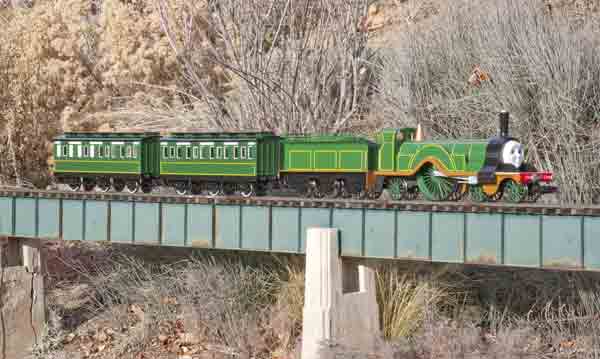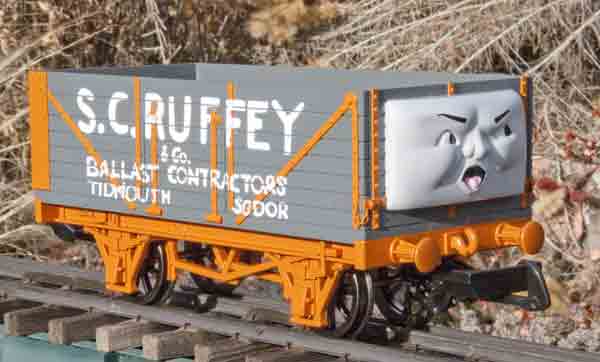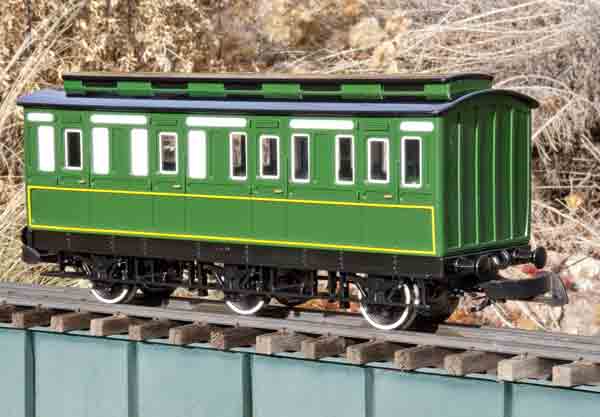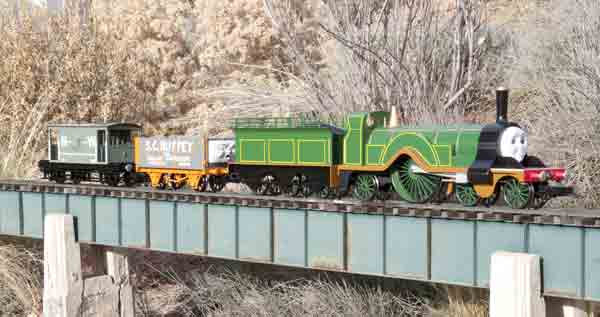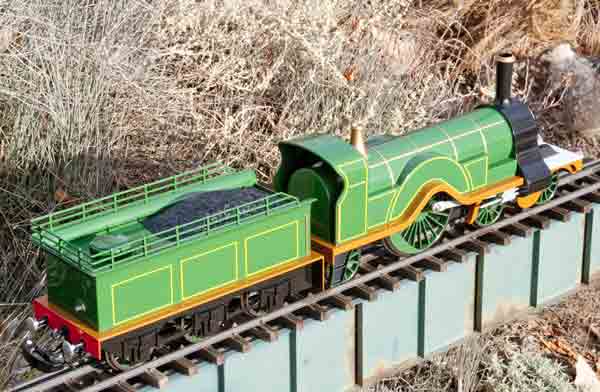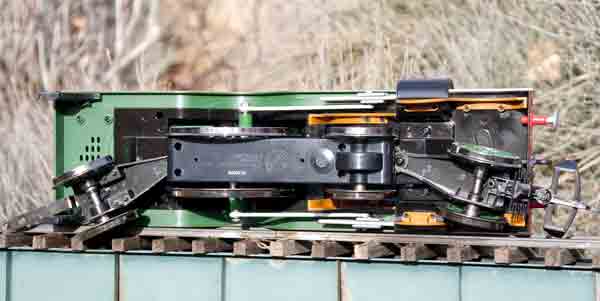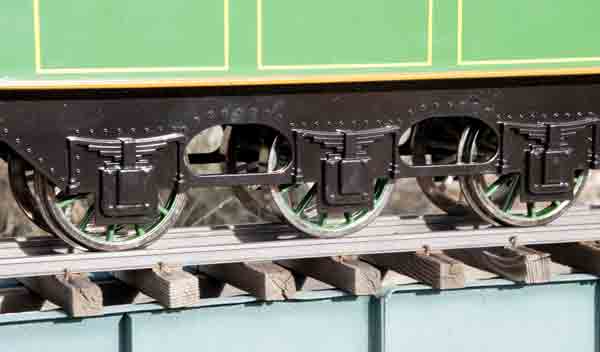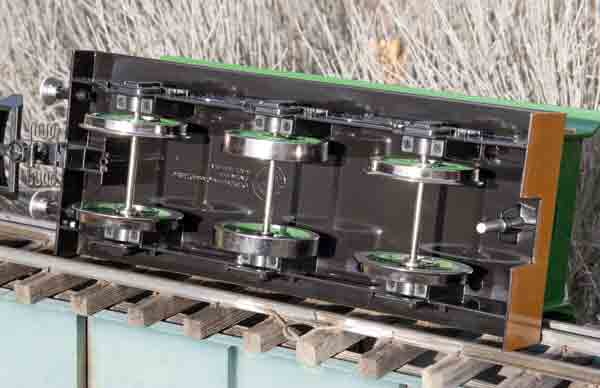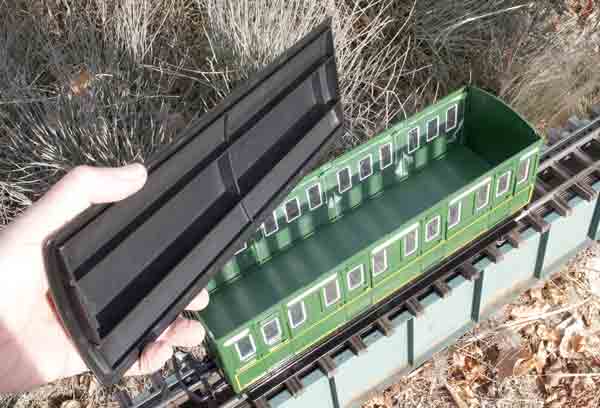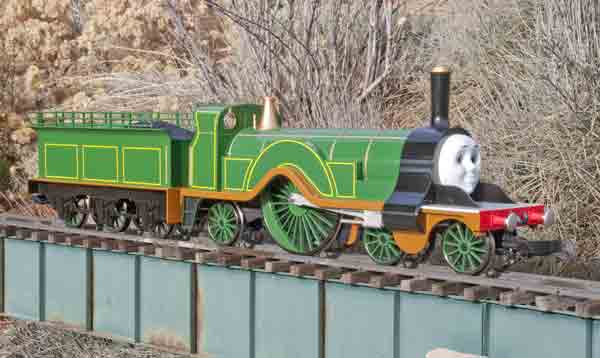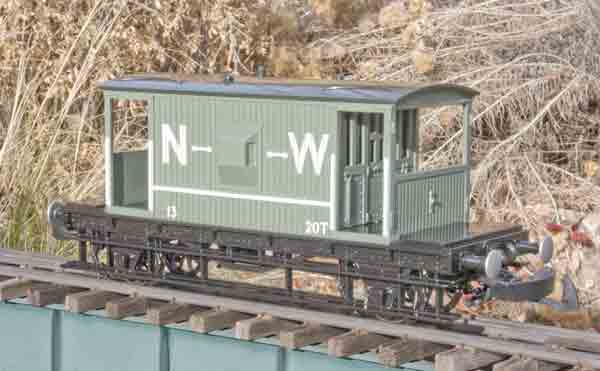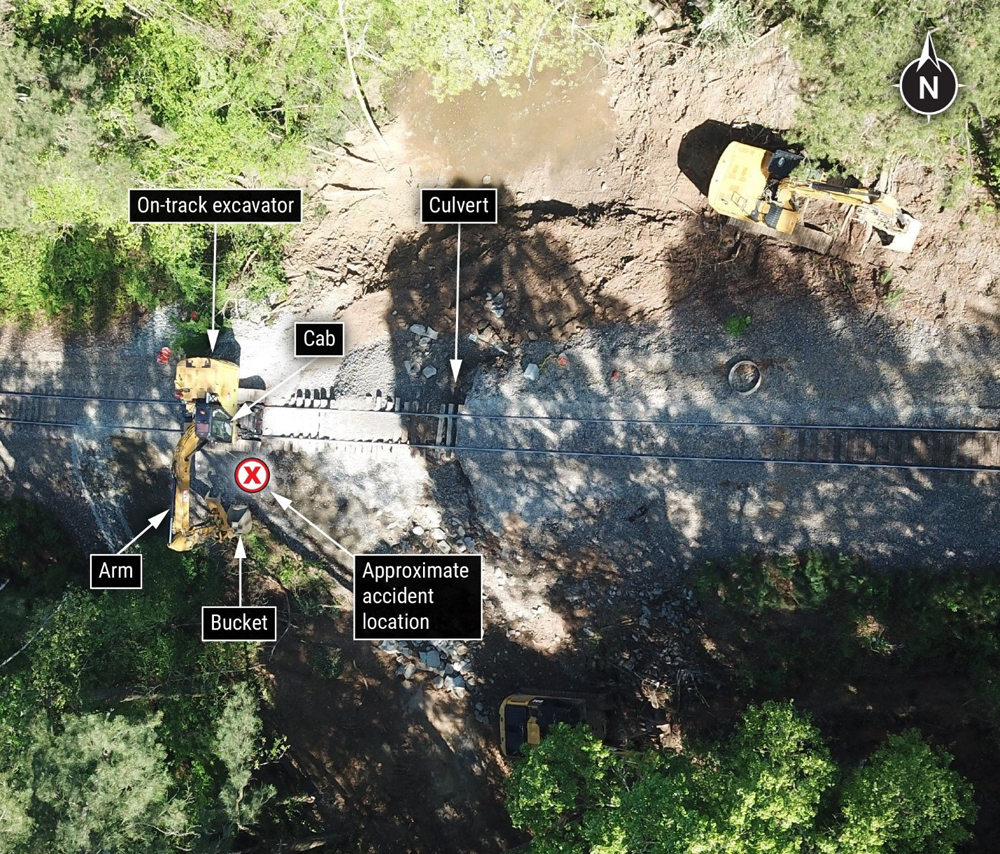Bachmann Industries
1400 E. Erie Avenue
Philadelphia PA 19124
Prices: See text
Website: www.bachmanntrains.com
Mostly plastic gauge-1 locomotive and rolling stock from the “Thomas and Friends” TV series; hook-and-loop couplers; metal wheels; moving eyes on locomotive; circuit breaker in engine for overload protection
Pros: Well designed and constructed toys; excellent paint and finish; no fragile parts to break off; bright, shiny, and colorful; metal wheels; smooth, quiet operation
Cons: Middle wheels on six-wheeled vehicles don’t reach the rails; no user manual included with locomotive
Bachmann’s Emily (#91404, $375) is a good likeness of the TV character. She is a big, shiny, brightly colored locomotive that will delight the heart of any “Thomas” enthusiast, regardless of age. The locomotive is constructed primarily of heavy plastic. The detail level is low, as befitting a toy engine intended for children and rough usage, and there are no fragile pieces to be easily broken off. Emily’s friendly, smiling face adorns the front of the engine.
The engine is supplied with an exploded drawing showing all of the parts, as well as a sheet dedicated to couplers. Emily comes with oversize hook-and-loop couplers, which will be easy for small hands to manipulate. An extra coupler of this variety was included. The sheet covers the installation of knuckle couplers and lowering them to “Garden Railroad height.” Also mentioned on the sheet is a polarity switch on the bottom of the engine, which seems to have become standard on large-scale engines.
Mechanically, Emily’s setup is ingenious. The prototype (if Emily can be said to have a prototype) was a 4-2-2, with a four-wheel leading truck or bogie, a single pair of drivers, and a non-swinging trailing axle mounted in the frame. While Emily appears to have this configuration, she is, in fact, a 2-4-2. The lead axle swings, as does the rear axle. The motor block is perhaps the most unusual I’ve ever seen, with a pair of small wheels and a pair of very large wheels, both pairs powered. A motor, mounted in the rear of the boiler and equipped with a worm, engages a gear train, composed of several plastic reduction gears, which turns the large wheels at one speed and the smaller ones at a higher speed but giving them the same linear speed when on the track. It’s a neat system and, because of this arrangement, Emily will happily negotiate R1 2′-radius curves.
The engine is otherwise basic in its design and construction—no lights, no additional electronics. According to the exploded-drawing sheet, there is a speaker mounted in the rear of the engine. In fact, though, although there are speaker holes in the floor under the backhead, upon disassembly I found no speaker, nor was there any mention of one in the accompanying literature.
Emily comes with a six-wheel tender and is coupled to it with a two-position metal drawbar. In order for it to negotiate the tight-radius curves, the tender’s center axle carries flangeless, or “blind,” wheels. Unfortunately, these wheels are a slightly smaller diameter than their mates and they don’t actually touch the rails, so the wheels don’t revolve. This wouldn’t be so noticeable if they weren’t spoked. When coupled together, Emily and her tender measure an impressive 28 1/2″ over the buffers.
In operation, Emily runs smoothly and relatively quietly. Power pickup is through the four drivers. Slow-speed operation, especially given the enormous drive wheels, is excellent. Top speed, at 24V, is pretty brisk (though not unreasonable) but perhaps more suited to larger-radius curves. Emily’s eyes move from side to side as she travels, her glance rate proportionate to her speed.
To go along with Emily and other “Thomas” characters, Bachmann has produced a variety of rolling stock, sold separately. Sent for review were S.C. Ruffey (#98010, $82), an open wagon; a brake van (#98008, $82), Emily’s coach (#97003, $95); and Emily’s brake coach (#97004, $95). These cars are also made of heavy plastic and are painted in fairly prototypical colors. Wheels are all metal and couplers are again of the hook-and-loop variety. While intended as toys, not scale models, all of the pieces of rolling stock are fairly good representations of typical British railway vehicles.
S.C. Ruffey (the only one of our review samples with a face on one end), is an open wagon, or “truck,” as it is called, and is evidently one of the more troublesome variety if his facial expression is any indication. He’s painted gray, with orange iron work, and is lettered for S.C. Ruffey & Co., Ballast Contractors. The loops on this car are smaller than those on the engine, but are still compatible. An extra small- and large-loop coupler is also provided with this car.
The brake van, painted gray and black with white trim and lettered “NW” is a typical brake van. These would be used at the ends of trains, in the caboose position.
The coach and the brake coach are similar vehicles, the only difference being that the brake coach has some windows whited out. Each is a six-wheel car and, like the tender, the center wheels are blind. Also, like the tender, they don’t quite touch the rails. However, since they are not spoked, this is not so noticeable. These cars have no interior detail at all but do have the nice feature of lift-off roofs. While this makes them a little harder to pick up, it adds a lot of play value, as children can furnish and populate the coaches any way they like.
This locomotive and its attendant rolling stock are attractive and well-made additions to the growing, large-scale “Thomas” family. They should provide any Thomas fan with years of fun and we hope they will attract a lot of younger folks to the hobby of large-scale garden railroading.





